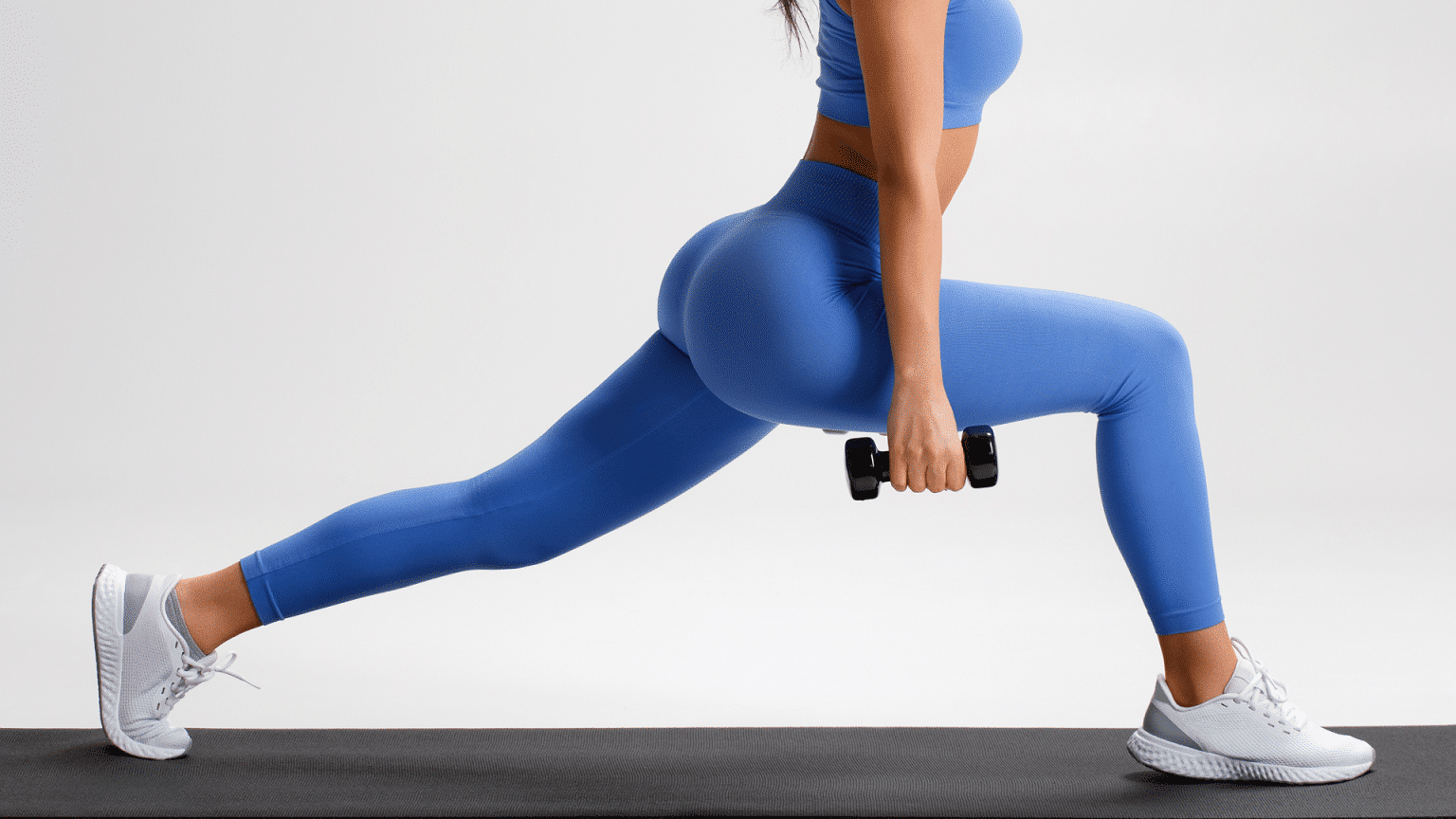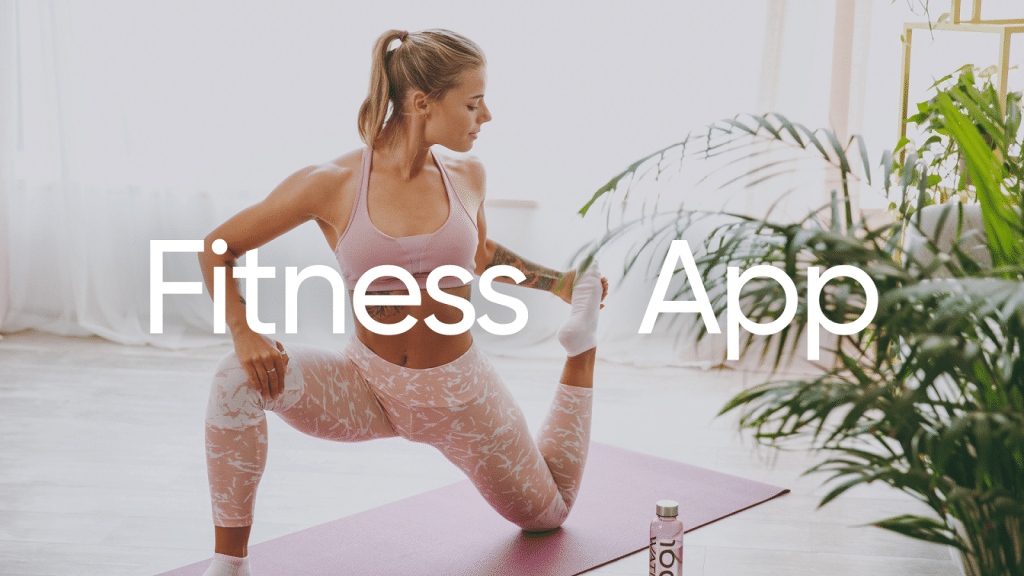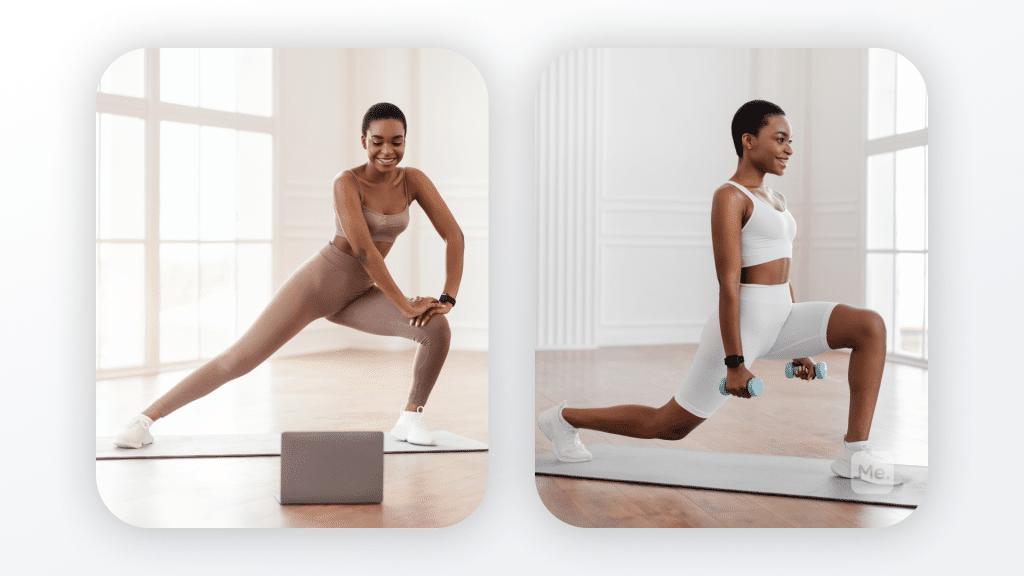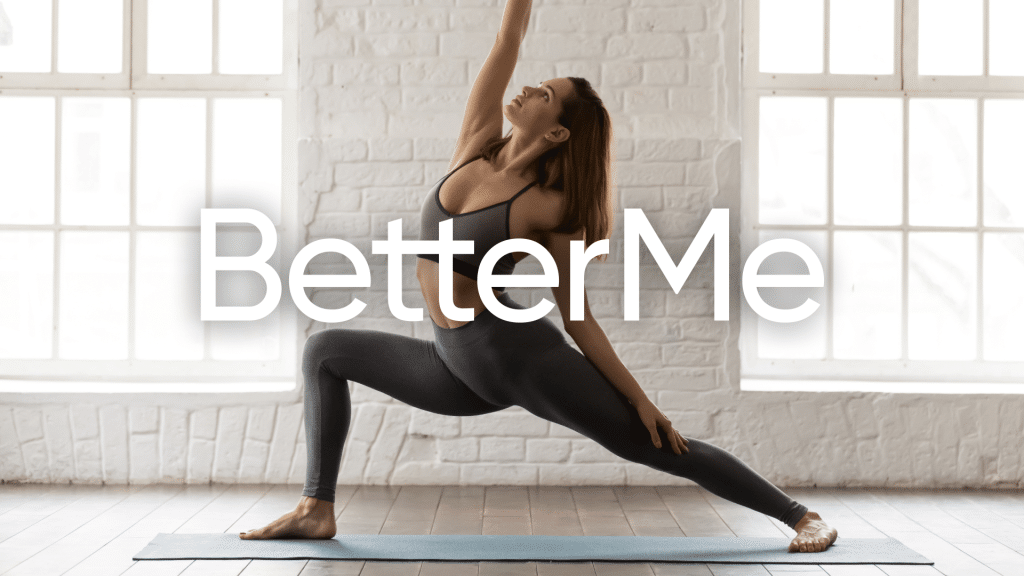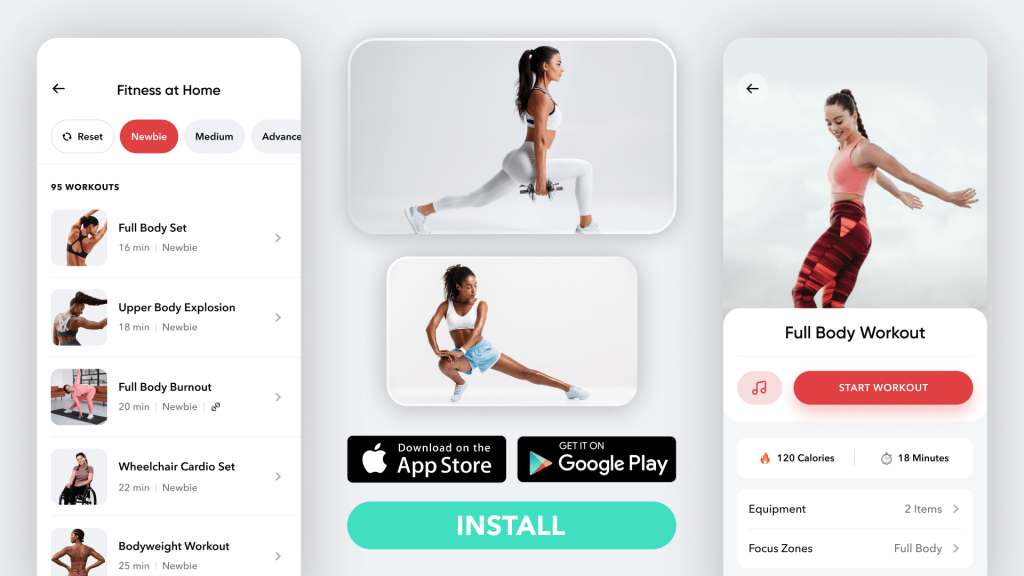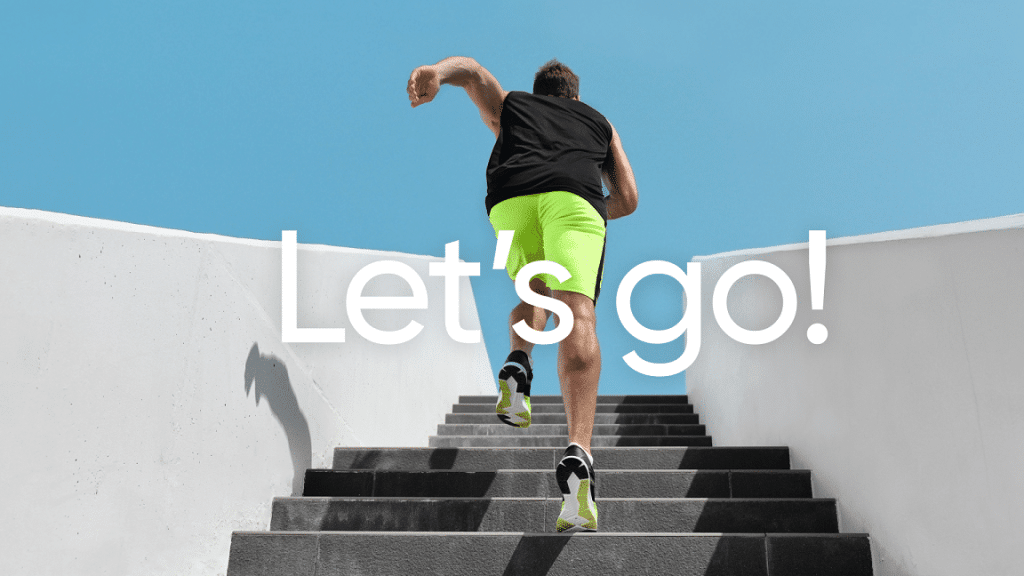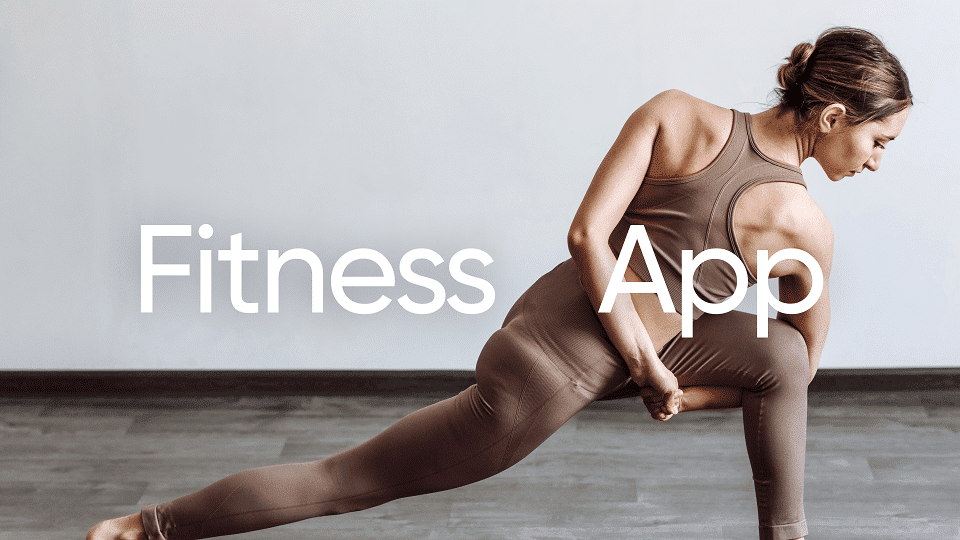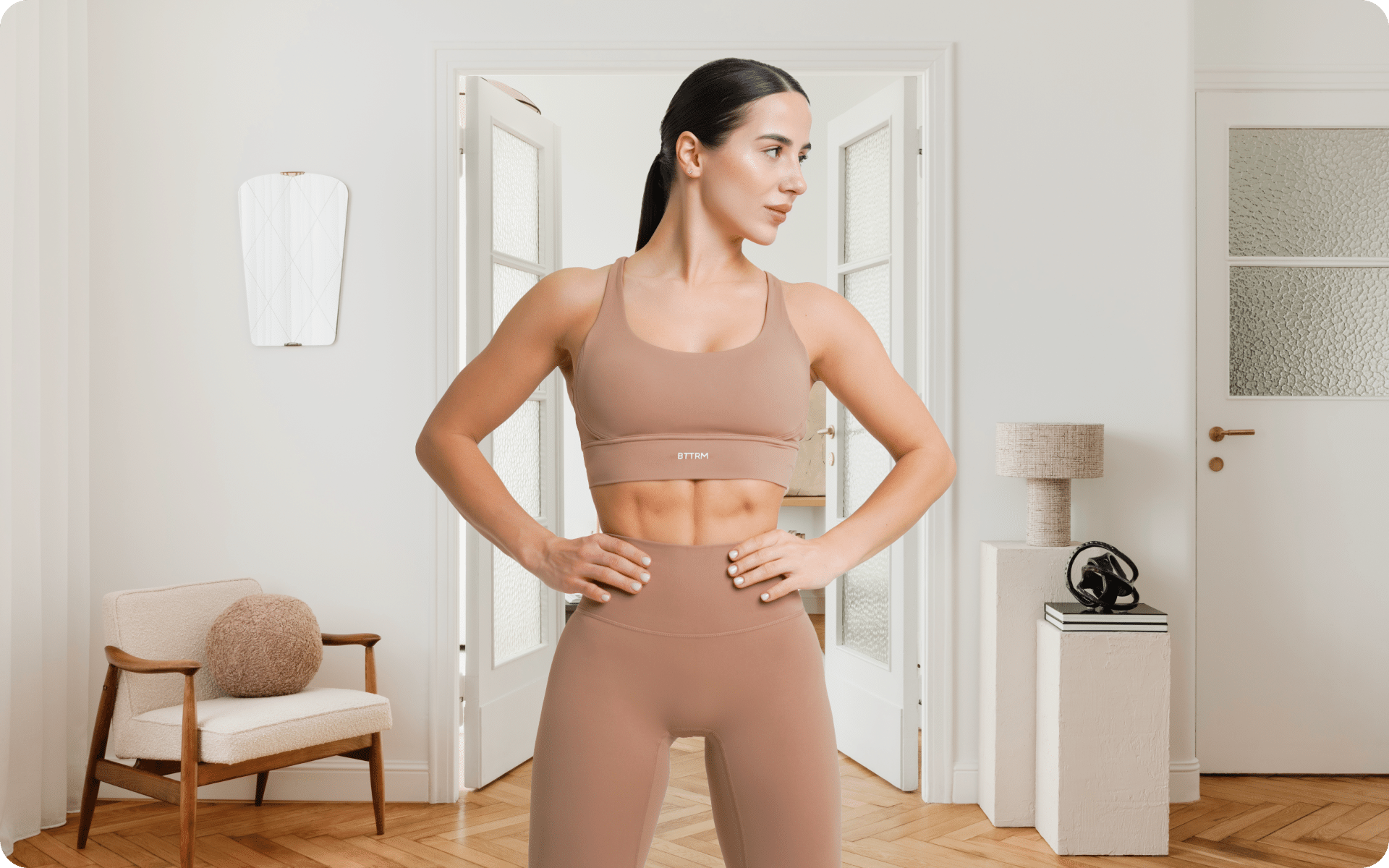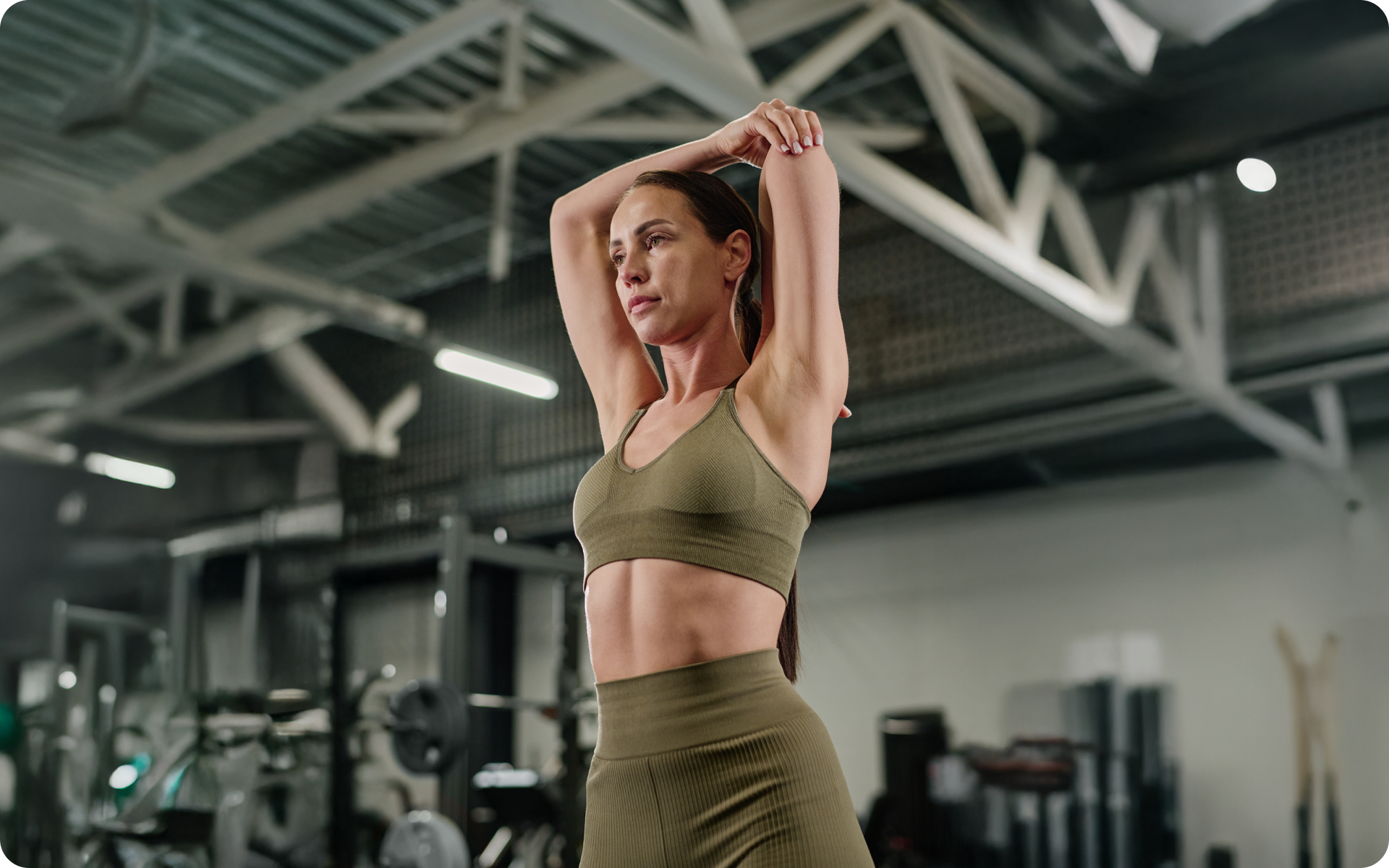Do you ever look at Johnny Bravo and wonder why girls keep beating him up? Well, that’s what happens when you work out focusing on your upper body. Sure, you’ll look good in that black t-shirt, all beefed up and muscular. However, ignoring your lower body will leave you giving out a Johnny Bravo vibe- we all know how that worked out. Lunges are an excellent way to boost your lower body workout routine. These exercises help you go about your everyday movements comfortably while strengthening your lower body’s muscles. Read about lunge variations in this article!
What Is A Lunge?
A lunge is a workout routine used to strengthen your lower body’s major muscles like the quads, hamstrings, and glutes. Lunges are unilateral exercises, meaning they primarily train one side of your body at a time. Also, when you’re doing lunges, one leg tends to work more than the other.
To put it into perspective, the following are some of the benefits that lunge routines have on your body:
- Balance and stability. Lunges are unilateral exercises. Therefore they activate your stabilizing muscles to achieve balance whenever they are performed. When one side of your body is being worked on, the other becomes unstable, making your core and spine work harder to achieve stability.
- Alignment and symmetry. You can use lunge routines to correct misalignments on the less dominant side of your body.
- Weight loss. Lunge exercises lead to the development of lean muscles in your lower body while reducing fats. Having more muscles increases your metabolism, leading to burning more calories initiating weight loss.
- Improved posture. Lunge exercises develop your core muscles without straining your spine. When you have a stable core, your posture improves, making movements easier.
There are various lunge variations you can use to get the most out of these routines. You’re probably asking yourself which lunge variations are best suited for your needs. Well, let’s take a look at the effectiveness of each lunge exercise variations on specific muscles in your lower body.
What Muscles Do Lunges Work?
Squats and Lunges are not that far off from each other. Many people ask, what do lunges work on that’ll make me want to do them? Aren’t squats adequate for my lower body workout routine? To answer these questions, let’s take a look at the muscles that lunge routines work on.
Primarily, lunge exercises target your quadriceps. There are, however, other muscles that aid in this movement. These muscles include your gluteus maximus in your butt, adductor Magnus in your hips, and soleus muscle in your calf. By doing lunge exercise variations like reverse lunges, the primarily targeted muscles shift from your quadriceps to your gluteus maximus.
Stabilizer muscles are also activated during lunge exercises, maintaining your posture and stabilizing your joints. These muscles include your hamstrings found in the back of your thigh and gastrocnemius in your calf. The gluteus minimus and medius in your butt and the tibialis anterior in your calf are also worked on. Acting as stabilizers in your core are your obliques and quadratus lumborum muscles.
Lunge routines have enormous benefits on your low body muscles. The only question that’s left now is how do we properly do them? Folks, I now give you the how (2).
Read More: Squats Vs Lunges: Which One Of These Time-Honored Exercises Is More Effective?
How To Do Lunges The Right Way?
You can think of doing a lunge like doing a single leg squat. Doing a lunge involves bending your hips forward as your knees are bent lower into a lunge. You should then sit back on your butt and transfer your weight to your heels. Pressure will then be relieved from your knees, restricting the work to your glutes and quads.
When performing any lunge exercise, be it low lunge variations or yoga lunge variations, you should maintain balance. Movement in your lower spine should be minimized. Also, the back of your knee should come close to touching the ground. It indicates muscle weakness or lack of mobility if you’re unable to perform lunges in proper form.
If you’re unable to lower your knee to almost touching the floor, weak adductor muscles may be the culprit. Also, the back and front of your feet should not be close during short lunges. If that happens and your front heel comes off the floor, tightness in the soleus muscle may be the cause.
Once you recognize which muscles are weak or tight, you can adjust to perform the lunges using proper form. You should always use the correct form when exercising to avoid injuring your muscles and joints.
However, everyone is different and unique. There are a lot of factors that can influence how deeply you can lunge. Things like ankle and hip mobility vary in everyone, and it determines how deeply you can lunge. So it is okay to do what you’re most comfortable in (1).
How To Do Lunges?
A general instruction during lunge routines is that your knees should not go past your toe. Sure, this instruction may apply to a majority of people, but not all. For instance, people with long limbs may need to put their knees slightly forward to get the proper posture. So while the instruction is generally a good one, it’s not always practical for everyone.
When it comes to lunge exercises, there are good form notes that should always come first. They include continually hinging on your hips, transferring the weight to your glutes and quads, and keeping your back flat.
Your back should never arch when you’re doing lunge exercises. For some people, keeping their torso upright gets them comfortable; for others leaning forward is the answer. In both categories, your spine should always be straight and back flat. Also, your chest should stay open while you relax your shoulders. Your neck should be aligned with your spine and not strained in any direction (3).
Lunge Exercise Variations With Step-By-Step Instructions
Now that we have established the importance and benefits of lunge routines, the question that is left is how? Maybe you want to know what the best lunge variations for glutes are. For the wrestlers, you want to beef up that hamstring. You, therefore, want to know what are the best lunge variations for hamstring development.
Then, the group wants to strengthen their quadriceps and want to know how to do side lunges properly. Worry not because this list explains how to do different lunge variations in step-by-step instructions. Let’s take a look then, shall we?
Static Lunge
Static lunges are a simple and very effective lunge routine to start with. These exercises significantly build up your leg and butt muscles when done in the correct form.
How to do static lunges:
- Pile your shoulders above your hips while engaging your core and looking straight ahead.
- Using your right foot, step directly forward, then elongate your stance, bending both your knees to 90 degrees. Tracking your front knee over your ankle will help protect your joints.
- Lowering your back knee towards the floor will result in your rear heel lifting. You should therefore use the ball mount of your foot to align your heel.
- You then lunge as low as you can in the correct form. Push off your foot to stand up with your left leg. Maintain your feet in the resulting split-stance.
- Repeat the steps as you alternate between sides.
Whether you’re looking to simply pep up your fitness routine, jazz up your diet with mouth-watering low-calorie recipes or want to get your act together and significantly drop that number on your scale – BetterMe app has got you covered! Improve your body and revamp your life with us!
Side Lunge
This lunge routine is often considered simple, but that doesn’t take away its benefits. Side lunge variations specifically target your quadriceps, legs, and hips at a different angle. This lunge routine helps develop stability, balance, and strength by training your body to move side by side.
How to do a side lunge:
- Stand with your feet apart from each other.
- Align your hands and weights (if you’re using them) with your hip bone.
- Lunge to the right side while bending your knee, touching the weight on your right foot.
- Return to the center and repeat the process on the other side.
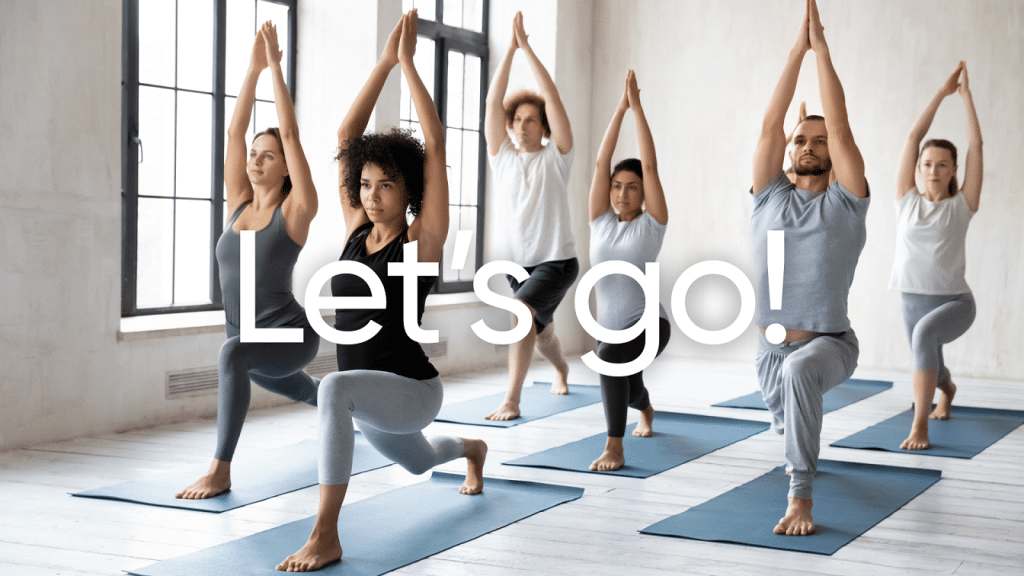
Reverse Lunge
If you have less hip mobility or difficulty balancing, this lunge variation will do you a world of good. Also, if you have knee problems, this lunge routine is the most ideal for you. Reverse lunges reduce the stress on your joints, giving more stability to your front legs and activates your core, hamstrings, and glute.
How to do a reverse lunge:
- Stand upright with your hands on your hips and legs together.
- Move back with your left foot, making sure you land on the ball of your foot.
- Lowering your body, bend your right knee till a 90-degree angle is formed.
- Reversing the movement, stand. Repeat the same procedure on the other side.
Reverse Lunge Press
This exercise strengthens your glutes, hamstrings, quads, core, and shoulders. It also boosts metabolism trimming down excess fat while sculpting your whole body.
How to do a reverse lunge press:
- Hold a pair of dumbbells at shoulder height, bending your elbows and facing your palms forward.
- In a single motion, stand on your right heel. Raise your left knee to hip height and press the weights overhead.
- Take a pause and lower back again to start. Repeat the process on the other side.
Reverse Lunge and Kick
This lunge exercise variation is a perfect way to get your body kicking. As an added advantage, it gets your heart racing, prompting faster metabolism to burn the extra calories.
How to do a reverse lunge and kick:
- Stepping back from a standing position with one foot, complete a reverse lunge. The other foot should remain planted on the ground.
- Pushing with your planted leg, kick the other foot in front of you.
- After kicking, immediately perform another reverse lunge to begin the next rep.
Reverse Lunge With Rotation
This lunge variation exercise primarily targets your hamstrings, quadriceps, calf muscles, core, and gluteus maximus. The kind of intensity that it provides revs up metabolism, prompting faster calorie combustion.
How to do a reverse lunge with rotation:
- Get into the correct position. Always make sure your feet are shoulder-width apart, and your hands are held together on your hips.
- Move back about two feet using your right foot, ensuring you land on the foot’s ball.
- Keep your heels off the ground and bend your knees, creating two 90 degree angles. Make sure your chest is upright and your torso is slightly leaned forward to create a flat back.
- Then slowly rotate your torso to your left. This rotation should elicit a stretch-like feel in your mid back.
- Rotate back to the center and return to the original position by pushing through the heel of your left leg.
- Next, stepping back using your left foot, lower yourself into a reverse lunge. Twist your torso to your right. This concludes the first rep.
- Repeat this procedure alternating sides for the required amount of reps.
Curtsy Lunge
This lunge exercise improves hip stabilization by working on your quadriceps, hamstrings, and hip abductors. Also, by strengthening your glutes and your derriere, curtsey lunges improve your posture while preventing and relieving knee and back pain.
How to do a curtsy lunge:
- Get into the starting position- standing upright with feet shoulder-width apart and hands on your hips.
- Stepping your right foot diagonally behind you, lower your right knee to a position where it nearly touches the ground.
- Driving through your left heel and standing up, returning to the original position.
- Repeat the procedure, alternating between sides for the required number of times.
Pivot Lunge
Pivot lunges will increase your muscle mass while toning your lower body.
How to do a pivot lunge:
- To get into the starting position, make sure your feet are together.
- When using dumbbells, carry them in both hands, then put your arms down on your side.
- Next, align your hip next to a step. Turning towards the step, put your left foot on it and lunge.
- Make your left thigh parallel to the ground by continually lowering yourself.
- Next, press through your heel, pushing yourself back and rotating back to the original position.
- Finish all the reps on one side, then switch sides.
Rear Foot Elevated Lunge
Rear foot elevated lunges improve the strengths of your legs, toning your core. This exercise primarily targets the glutes, hamstring, and quads.
How to do a rear foot elevated lunge:
- Stand a few feet in front of a step. Next, place the left foot on the bench so that the heels are lifted, and toes rested on the bench.
- Bending your right knee, lower body until both knees are at a 90-degree angle.
- Squeeze your glute while pressing yourself backward to start. This should be done while maintaining the weight on your right leg.
- Move up and down for the desired number of reps, then switch sides.
Read More: How To Lose 40 Pounds In 2 Months: The Best Plan To Help You Chase Away Those Extra Pounds
Forward Leaning Lunge
These lunge routines target the major muscles in your leg and butt. Performing these exercises will lead to better-toned legs and butt.
How to do a leaning lunge:
- Hold dumbbells at your side with your arms relaxed.
- Extend one leg out in front of you and lunge until the knee of the back leg nearly touches the floor while keeping the arms at your side in a relaxed position with dumbbells in hand.
- Lean forward during the movement with back and head straight.
- Then push yourself back up through your heels to the starting position with your leading leg.
- Perform the same movement with the other leg.
Clock Lunge
This lunge exercise targets your hamstrings, hip adductors, core, and gluteus muscles.
How to do a clock lunge:
- Get into the starting position.
- Using your right foot, take a step to the side.
- Next, rotate away from your body in a clockwise direction heading towards the 5-o’clock position.
- Keep your left leg and foot straight and flexed, respectively, and lift your chest. Bending your right knee, push back your butt into a lateral lunge.
- Pushing through your right heel, stand and rotate back to the position you started in. This concludes the first rep.
- Perform the required number of reps on both sides.
Jumping Lunge
If you came looking for a challenge, this is it. Jumping lunges are among the most intense lower body workout routines you can come across. It is a sure way of getting your heart racing and revving up the metabolism in your body.
How to do a jumping lunge:
- Begin by going down into a lunge position, setting both knees at 90-degree angles.
- Next, jump and switch legs, landing quietly with your soft knees.
- Go back to the lunge position and repeat the exercise as required.
Side To Side Lunge
These lunge exercises help improve your stability by working on your quadriceps, legs, and hips.
How to do a side to side lunge:
- Stand upright with your feet parallel and apart.
- Keeping your torso upright, take a giant step to the side.
- Lower the knee of your leading leg to an angle of 90 degrees. Your trailing leg should be kept straight during this process.
- Repeat this procedure on the other side.
If you struggle to even flirt with the idea of giving up your favorite foods or working out till your legs give way – BetterMe app is here to breathe a fresh perspective into the way you view the weight loss process! Check out the app and experience the fun side of fitness and dieting with BetterMe!
Common Mistakes To Avoid While Doing Lunges
Lunge exercises are an excellent way to work on your lower body. In bilateral exercises, your dominant limb can quickly compensate for the less dominant one. Lunges being unilateral exercises, they make sure that both limbs get their turn at work.
However, to reap the full benefits of these lower body workout routines, you need to perform them correctly. Also, if these exercises are done the wrong way, you may end up getting unexpected injuries.
There are a few mistakes that you need to steer clear of to benefit from lunge exercise fully, and they include:
Lunging With Your Feet Close To Your Centerline
When you look at acrobats walking on tightropes, you probably think, wow, the balance! This thinking, however, should not be your motivation when lunging. Stepping too narrowly like you’re walking on a tightrope will only make it harder for you to balance.
Also, you may not activate the right muscles while increasing stress to your hips and knees.
How To Fix It:
Your starting positioning before lunging should always be with your feet hip-width apart. Next, avoid aligning your working foot with the other foot. The working foot should be aligned with your hip.
Lunging While Focusing on Quantity, Not Quality
Many people tend to feel proud of themselves based on the number of lunges they can achieve. As a result, they may end up not activating the right muscles while rushing through the process. This is simply not the right way to do it!
Quality should always be emphasized over quantity during lunge routines. Scoring a few good repetitions is preferred to many repetitions that do not achieve their intended purpose.
How To Fix It:
Take your time when you step into a lunge and pause two counts before going back to the starting position. Make sure you feel the targeted muscle firing throughout the process.
Allowing Your Front Knee To Collapse
When your front knee collapses inward when lunging, it limits the effectiveness of the whole exercise. Also, you may end up developing knee injuries- a situation that’s not ideal.
How To Fix It:
Your knees should be aligned with your shoelaces when you lunge. If you can’t do that, weak glutes may be the culprit. To fix that, incorporate more glute strengthening-focused exercises in your routine.
Letting Your Front Knee Cap Travel Past Your Toes
When your knee slips past your toes, additional stress is put on the knee joint. This may lead to developing knee pain or discomfort over time.
How To Fix It:
An easy and effective fix to this is widening your stance to ease the pressure. Caution should, however, be taken to shift a lot of weight to the back leg.
Conclusion
Working out is a crucial piece of leading a healthy life. You should, however, not only focus on the upper body during workouts. The goal, after all, is to stay fit, not just being muscular.
Lunges will help a great deal in sculpting and toning your lower body. It would be best if you always took precautions to ensure that you’re making lunges with the correct form. Correctly doing these exercises minimizes the risk of injury while maximizing on benefits accrued.
Get your personalized
meal plan!
DISCLAIMER:
This article is intended for general informational purposes only and does not address individual circumstances. It is not a substitute for professional advice or help and should not be relied on to make decisions of any kind. Any action you take upon the information presented in this article is strictly at your own risk and responsibility!
SOURCES:
- Balance and Lower Limb Muscle Activation between In-Line and Traditional Lunge Exercises (2018, ncbi.nlm.nih.gov)
- Forward lunge: a training study of eccentric exercises of the lower limbs (2009, pubmed.ncbi.nlm.nih.gov)
- Lunge performance and its determinants (2003, researchgate.net)
